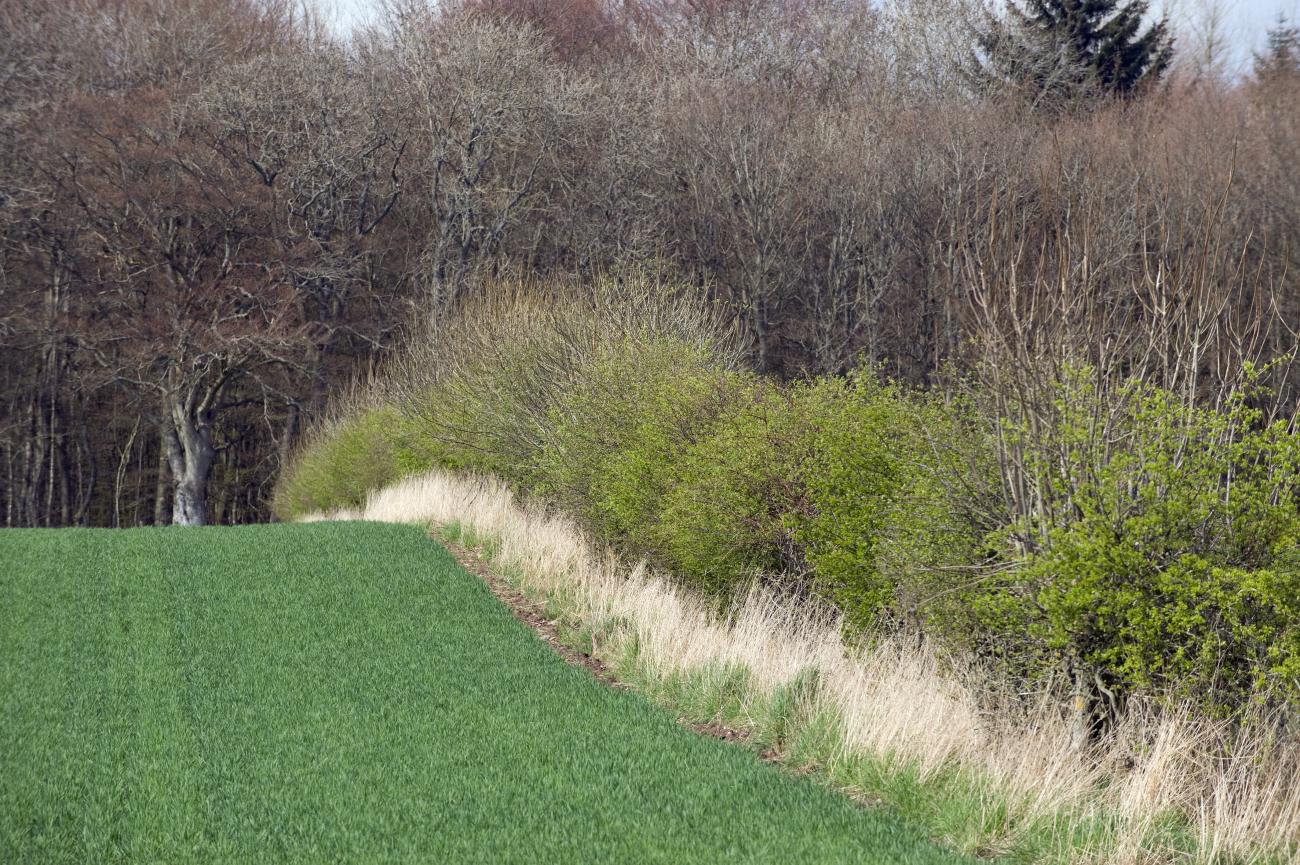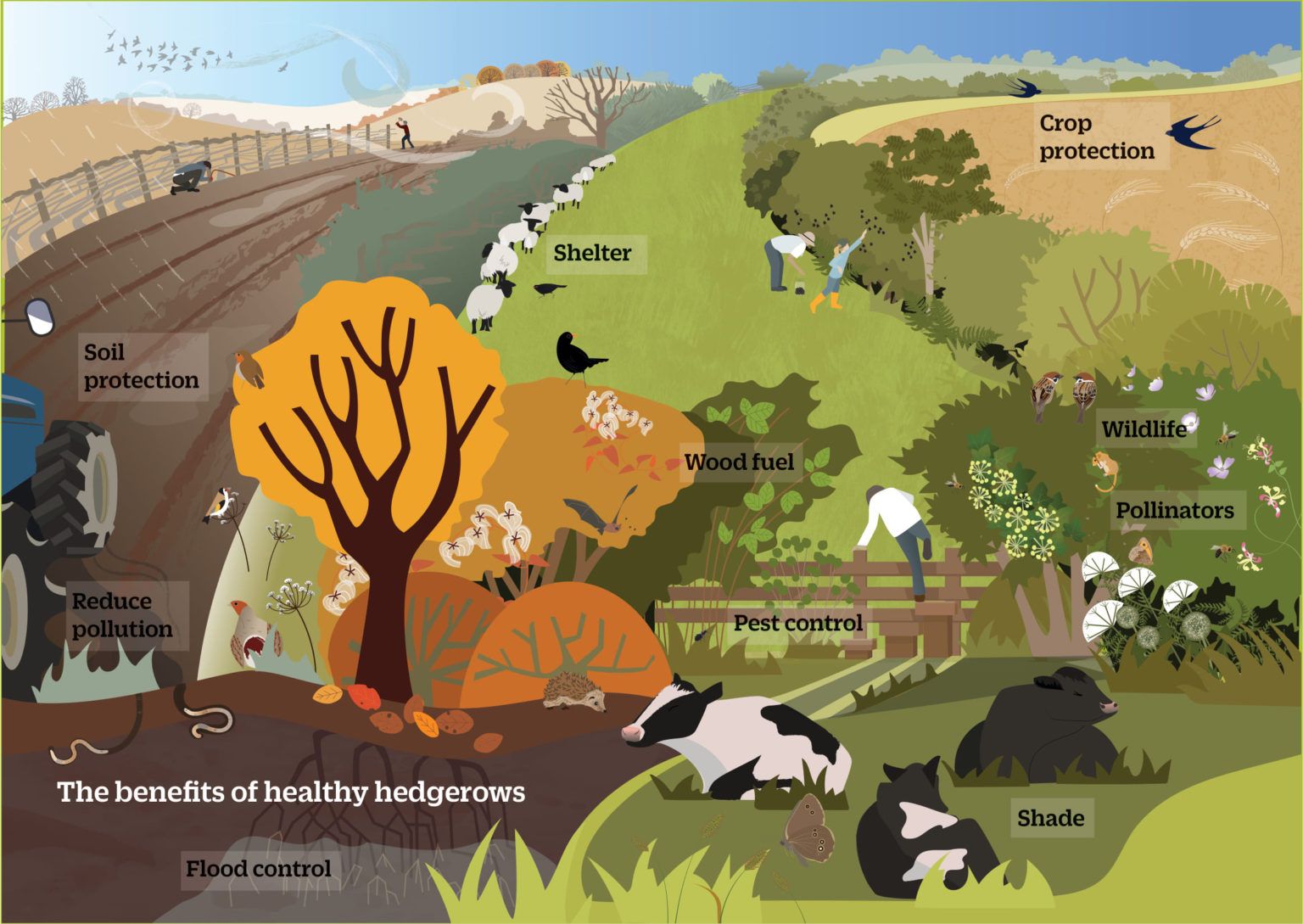Replace Good Old
No 8 With a Hedge
Become a Member
sponsors
Volunteers
Attend an Event

Did No 8 Wire Kill The Hedgerow?
I was sitting in the passenger seat, looking out of the window watching the world pass by. A question popped into my head.
As a Pom I grew up looking at a UK countryside.
That question!
Why are there no hedgerows in New Zealand?
In the UK and indeed most of Europe, paddocks (we call them fields) are seperated by hedged, some are hundreds even thousands of years old.
Hedges serve many purposes. They not only seperate stock but thye provive shade and valuable habitats for insects and wildlife.
So why didn’t the practice continue here?
I posed the question to wifey. She hit the nail on the head.
It’s down to good old Number 8 wire
The settlers cleared the land decimating the environment and carved it up with post and wire. Because it’s the most economical way the practice has continued.
It’s simply not viable to rewild the entire country but by planting hedges the infill will have a dramatic impact.
Hedgerows provide a wide range of benefits to farmers and land managers. Here are some of the ways that hedgerows can work for us.

We are interested in hedgerows because they are home to animals and provide habitat connection corridors meaning that wildlife can move around the landscape.
However, they also deliver a number of additional benefits to farmland, beyond that of a field boundary.
Here’s a list of some of the amazing things hedgerows do for us:
Hedgerows provide shelter for livestock
- Livestock on farms without shelter have a higher mortality and require more food
- Shelter can increase lamb survival rates by reducing the effect of wind chill and thus hypothermia
- In the summer months, heat stress can reduce milk yield in dairy herds
Hedgerows regulate water supply for crops by:
- Reducing water loss through evaporation by decreasing wind speed over the ground surface
- Helping to store water for later use – a 50m hedgerow at the bottom of a 1ha field can store between 150 and 375 cubic metres of water during rainy periods for slow release down slopes during dry periods
- Reducing flooding by increasing the rate of water infiltration and slowing flows of water. Their deep roots help them remove water faster from the soil than crops during periods of excessive rainfall.
Animal health can be improved
- Reductions in damp conditions in fields may reduce incidence rates of lameness.
Shelter creates warmer soils, extending the growing season
Hedgerows reduce soil erosion
- By reducing surface wind speeds; and
- Acting as a barrier to water-borne run-off
Hedgerows can reduce the need for pesticide use
- They increase populations of predator species; and natural enemies of pests can improve the potential for biological control, so reducing the need for farmer input or pesticide use.
- Biological control is a service provided by species of farmland birds and predatory invertebrates, such as spiders and predatory beetles, as these groups feed on, and therefore limit the populations of, pest species.
- Rich flora in a hedge base will attract a host of predatory and parasitic species able to tackle crop pests
Hedgerows help sustain pollinator communities which support productive farming
- Pollination services are valued at £430 – £603 million annually
- Managed honey bees are an essential part of pollination, but populations are currently vulnerable to disease and pesticide usage, making populations of wild pollinators increasingly important.
- Bees and other pollinators depend on forage throughout the year including when crops are not in flower
A sustainable source of wood fuel
- Hedges and hedgerow trees can provide sustainable wood fuel if managed correctly. Pollarding is a traditional management of trees that can provide both wood fuel and animal fodder.
Wildlife-friendly farms have reduced risk of bTB in cattle herds
- Hedgerows appear to be a key factor for improved biosecurity. ‘Hedge-poor’ farms, those with few hedgerows and large field sizes, were found to have greater risk of bTB outbreaks than ‘hedge-rich’ farms.
- Hedgerow availability, width and continuity has also shown to be to be more important than badger abundance in affecting bTB incidence.
Hedgerows can have a role in reducing the rate of climate change through carbon storage
- A new hedgerow may store 600 – 800 kg of carbon per year per 1000m, for up to 20 years
Hedgerows reduce pollution
- By reducing the amount of fertilisers, pesticides and sediment that reach watercourses.
- They do this by acting as a physical barrier, increasing infiltration into the ground, and through nutrients being recycled by the trees, shrubs and other plants.
Credit: https://ptes.org/
Make a Donation Today
$5
$10
$50
$250
$500
Other
Giving ONline
Pellentesque in ipsum id orci porta dapibus. Proin eget tortor risus. Vivamus suscipit tortor eget felis porttitor volutpat. Vestibulum ac diam sit amet quam vehicula elementum sed sit amet dui. Praesent sapien massa, convallis a pellentesque nec, egestas non nisi. Cras ultricies ligula sed magna dictum porta. Praesent sapien massa, convallis a pellentesque nec, egestas non nisi. Curabitur non nulla sit amet nisl tempus convallis quis ac lectus.
Giving By Check
Pellentesque in ipsum id orci porta dapibus. Proin eget tortor risus. Vivamus suscipit tortor eget felis porttitor volutpat. Vestibulum ac diam sit amet quam vehicula elementum sed sit amet dui. Praesent sapien massa, convallis a pellentesque nec, egestas non nisi. Cras ultricies ligula sed magna dictum porta. Praesent sapien massa, convallis a pellentesque nec, egestas non nisi. Curabitur non nulla sit amet nisl tempus convallis quis ac lectus.
How Donations Are Used
Pellentesque in ipsum id orci porta dapibus. Proin eget tortor risus. Vivamus suscipit tortor eget felis porttitor volutpat. Vestibulum ac diam sit amet quam vehicula elementum sed sit amet dui. Praesent sapien massa, convallis a pellentesque nec, egestas non nisi. Cras ultricies ligula sed magna dictum porta. Praesent sapien massa, convallis a pellentesque nec, egestas non nisi. Curabitur non nulla sit amet nisl tempus convallis quis ac lectus.
Our Partners & Sponsors






- Lorem ipsum
- Consectetuer.
- Aliquam tincidunt
- Mauris eu risus
- Vestibulum
- Auctor dapibus
- Neque
- Nunc dignissim
- Risus id metus
- Cras ornare
- Tristique elit
- Vivamus vestibulum
- Ntulla nec ante
- Praesent placerat
- Risus quis eros
- Fusce pellentesque
- Suscipit nibh.
- Integer vitae
- Vestibulum commodo
- Felis quis
- Ut aliquam
- Sollicitudin leo
- Cras iaculis
- Ultricies nulla
